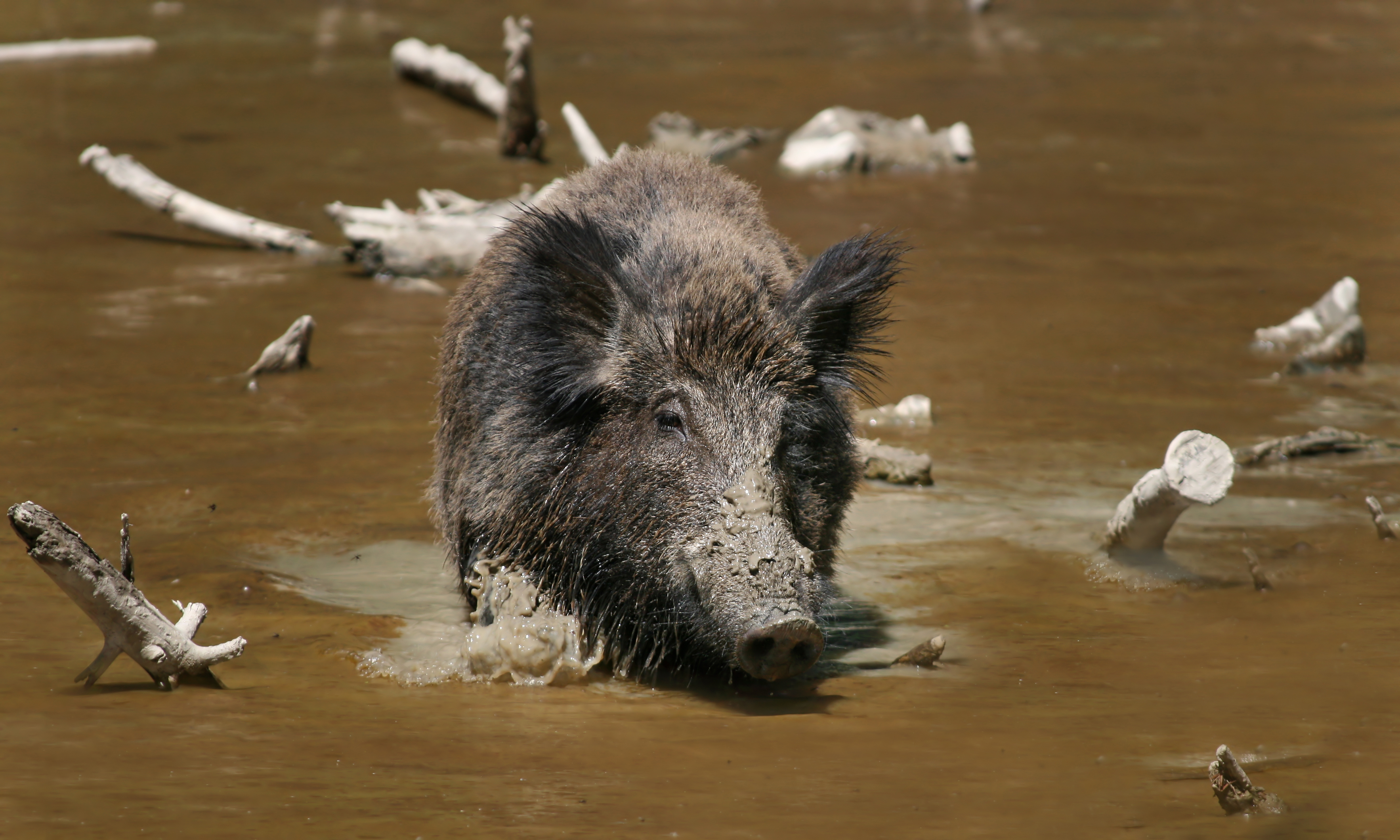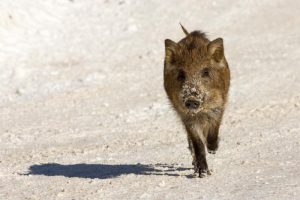
Saskatchewan finds itself in an all-out war against a foreign invader. But this menace is not wielding guns or missiles, rather sharp teeth and long tusks. The Wild Boar has become a dominant and dangerous species in the province, spreading like wildfire, causing destruction to property, other animals, habitats and even posing a threat to humans on its way.
The omnivorous hog, which can reportedly weigh as much as 130kg (287lbs!), reproduces at an astonishing rate, littering twice a year to produce 10 to 17 young.
They first arrived in the province as a get-rich-quick scheme for farmers, who were promised a booming market if they imported and raised their more expensive meat. When this did not materialize, hogs escaped or farmers just released them, unable to justify the cost of keeping them.
Once they were out into the wild, they began to wreak havoc. They are hard to track, incredibly tough and resourceful, making eradication extremely difficult. This has not prevented various approaches having been taken to try and cut down the population. The Saskatchewan Insurance Corporation (SSIC) sends investigators to check on reports of wild hog damage by farmers, and hunters are sent out if wild hog presence is confirmed.
The hunters aim for a 100% kill rate when they go hunting, because otherwise, any surviving hogs will spread to form other groups, and are also warier of humans in the future.
The tendency for hogs to form new groups is exploited to create GPS tracked “Judas hogs”, which help hunters pinpoint the locations of herds, which are so hard to track. The hunters then move in and kill all the members of the herd apart from the GPS tracked hog, allowing it to move onto another herd, continuing the process and earning its nickname.
These professional teams are limited in the range they can cover, and the province is limited in funds to pay them throughout the expensive process of searching, tracking and hunting. Hence, legislation has removed the license requirement for amateur hunters, who are supposed to be helping the professional crews. But because of the necessity for a 100% kill success rate, amateur hunters may just be fanning the fire.
Indeed, Saskatchewan may be past the point of no return; their best approach may be to just minimize the effects the current population is having.
Read more about the struggle against this fiercest and toughest of opponents and the devastation it is wreaking on Saskatchewan in Canadian Wildlife magazine, Sep + Oct 2017 edition.

